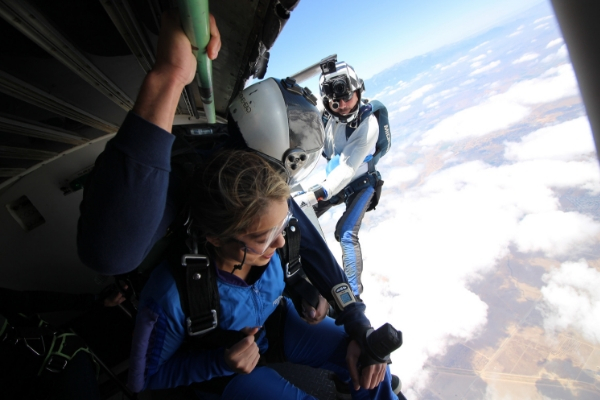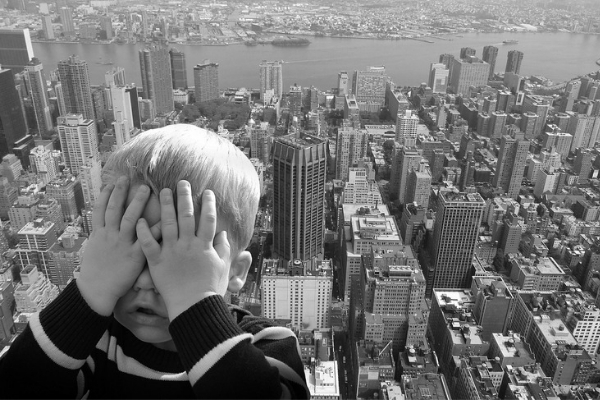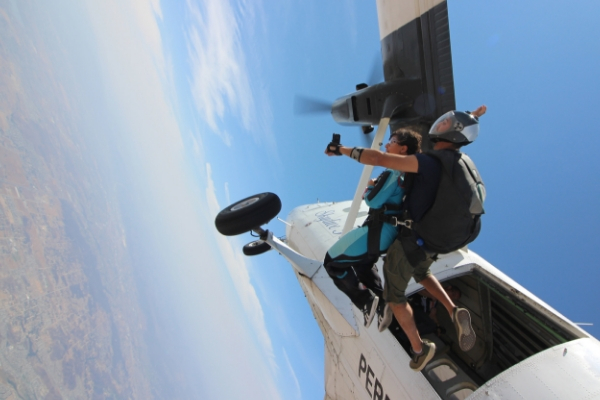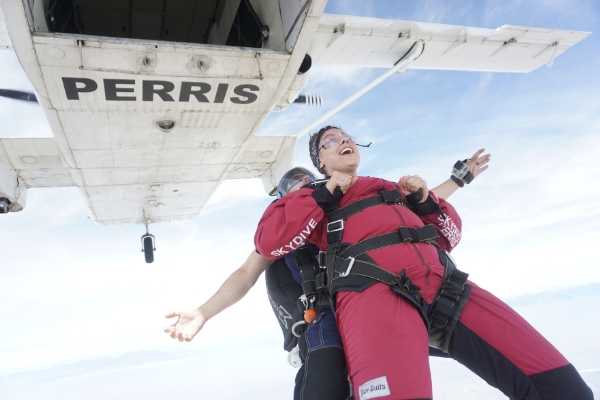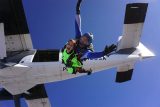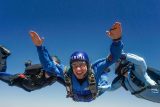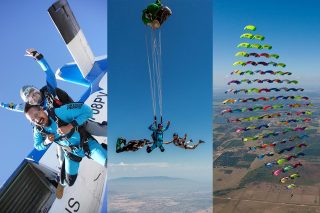Should You Go Skydiving If You’re Scared of Heights?
First Time Skydiving
Posted by: Skydive Perris
8 years ago
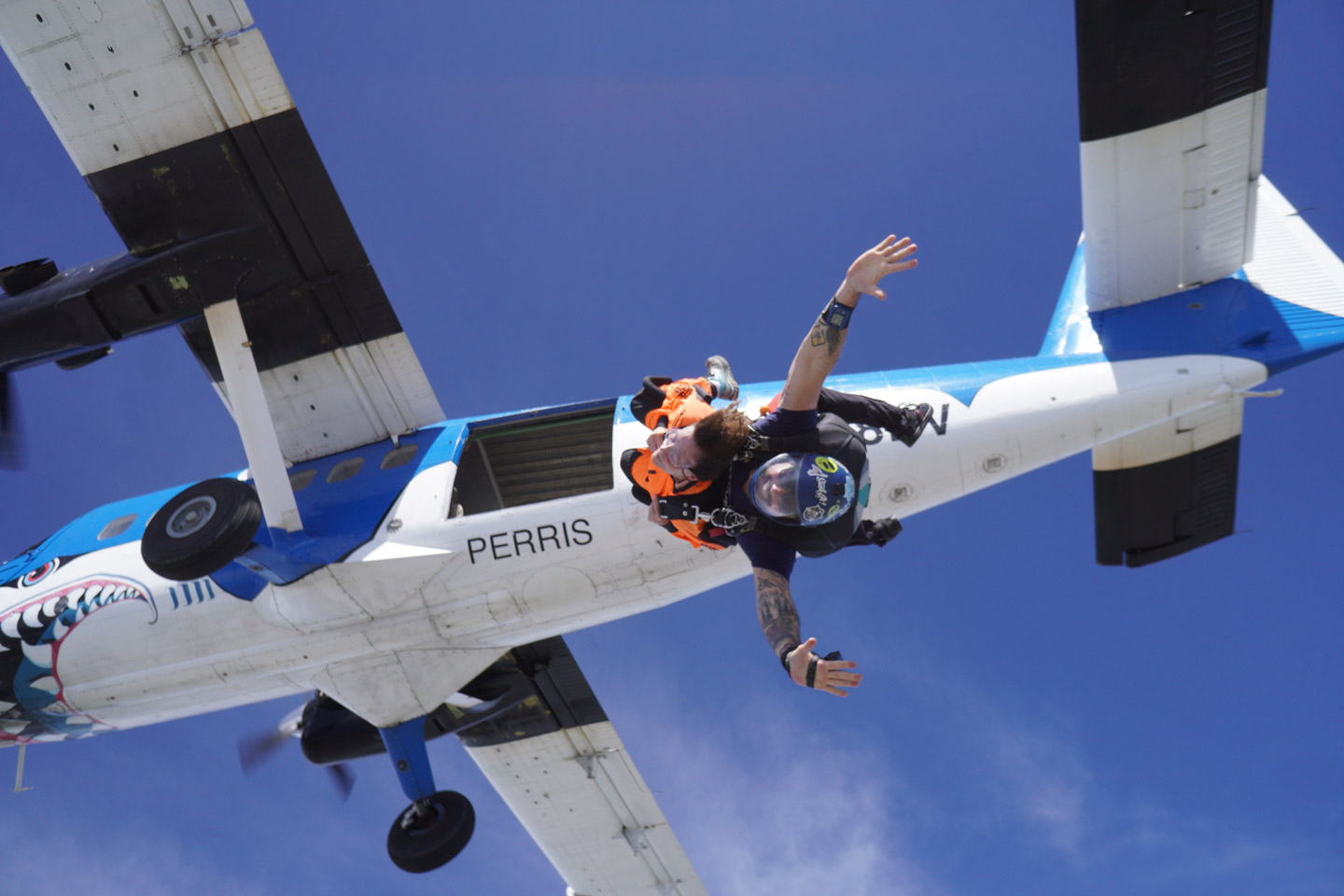
Many people don’t think they can skydive because they’re afraid of heights. We’re here to tell you that–as weird as it may sound–fear of heights doesn’t matter a bit on a skydive.
If you’re, like, that’s impossible, then calm down, Wiggum. It’s true! It might surprise you that being on a ladder will always feel more precarious than being in the door of a plane. It might also surprise you that skydiving will do nothing to directly cure your fear of heights–though it will help you address all kinds of fears, albeit in a systemic sense. If you’re ready to enter the weird and wonderful mystery house of skydiving and fear, we’re happy to take you on that journey. Just follow our lead.
1. Confirmed: It’s Not Maybelline. You Were Born With It
Snakes? Circus clowns? Zombies? Presidential candidates? Make no mistake, my friend: those are after-market fears. However, literally, every healthy human being was born with a fear of heights. It’s basic to our makeup. Whereas every other fear (except, interestingly, the dark) was added on afterward, we come out of the womb freaked out about high places. It’s called acrophobia, and the struggle is as natural as breathing. Evolution decided that dark and heights are the two things that humans need to be careful around from day one, hour one of our lives.
How do we know? Because of this classic acrophobia study. In it, scientists perched brand-new crawlers on top of one of two tables. These tables were set up a couple of feet from each other, with a sheet of crystal-clear plexiglass to form a table-wide bridge between them.
The baby’s mom was standing on the other side of the opposite table, encouraging baby to make his/her way across into her waiting arms. Even though the plexi was more than thick and wide enough crawl across, none of the babies were into it. Even that early on in their lives, with no previous experience of the feeling, their little brains already ordered them to stop. Baby ducks, however, didn’t even compute the difference between walking across an opaque solid object and a clear solid object. (Wings, therefore, are apparently the only scientific cure for a fear of heights.)
2. Making A Skydive Is A Lot Like Making That Crawl
Here’s the thing: jumping out of a plane is a lot like taking your place on one table and making your way across the plexiglass. Statistically speaking, even though it doesn’t feel like it when you’re standing in the door, you’re going to be just fine. With that first hesitant step, you’ll literally feel the support under you. And when you land, you’ll look back and think: Wow. That was way easier than I thought it would be. …I wonder what else in my life I’ve been unnecessarily hesitant about?
3. The Fear Isn’t What You Think It’s Going To Be
Think you’re going to freak out and freeze up? If you’re like most folks, no matter how scared you think you’re going to be, you’re not.
You see: From the open door of an aircraft cruising along at 12,500’ above the Southern California skies, the landscape below looks pivotally different than it does from that aforementioned bridge or cliff or building. In actual fact, it looks much like a Google Earth map. Since it’s the sense of depth that triggers acrophobia, and depth doesn’t exist from that angle, your fear of heights is going to remain essentially untriggered.
Make no mistake, however: you’re going to have feels. The sounds and sensations of putting on gear and going to altitude are very powerful!
4. It’s Going To Stay With You–As A Help Rather Than A Hindrance
Guess what? That fear of heights, which was carefully built into the structure of your brain, isn’t going anywhere. And that’s a good thing!
If you start talking to skydivers, you’ll notice that many of them are very keenly “afraid of heights.” These are the guys who can’t comfortably stand at a low bridge railing, who hesitate (or refrain) from walking close to the edge of any cliff, who even think twice before venturing up to the observation deck.
The difference is that the height-spooked skydiver is using their fear as a tool for personal optimization. Every time they walk to the aircraft door, they know that they’re up-leveling their confidence, optimizing their physical response to fear and building healthier perspectives on life’s daily challenges. Add all that up, and you’ll see the massive proportional benefits they’re reaping from their fear of heights.
So–how does all that strike you? Are you ready to strengthen your fear muscle and use it to move your personal mountains? We’re standing by to help! Book a tandem skydive near Los Angeles with the experienced team at Skydive Perris.
